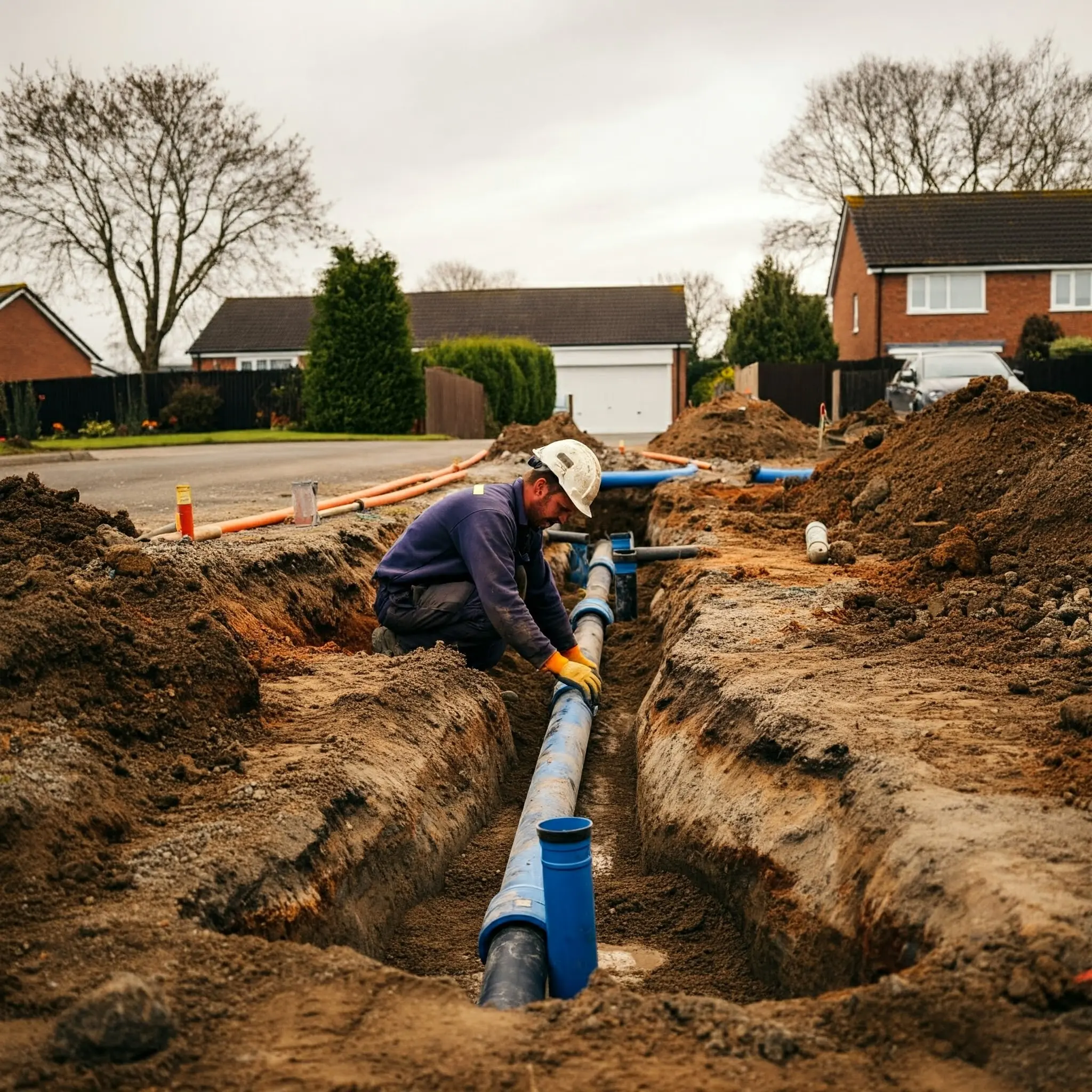What is a ring main water system
Imagine a continuous loop of water pipes running throughout your house, supplying fixtures from both ends. That’s the essence of a ring main system. They are different to traditional systems as they have a single line from the source to each outlet, a ring main creates a “ring” or loop, ensuring a constant and balanced supply of water to all points.
Key Components
- Main Ring Pipeline: The heart of the system, this loop encircles your home, connecting all water outlets.
- Branch Pipelines: These smaller pipes extend from the main ring to individual fixtures like your shower, basin, or kitchen sink.
- Valves: Strategically placed along the ring and branches, valves allow you to isolate sections for repairs or maintenance without disrupting the entire water supply.
- Pump Stations (Optional): In areas with low water pressure or multi-story homes, pumps boost the system’s efficiency and maintain consistent flow.
Why is it Better? Ring Main vs. Traditional Systems
Traditional water systems often lead to pressure drops, especially during peak usage times. Imagine your neighbour’s shower causing your water pressure to plummet! With a ring main, water flows from both directions, minimizing pressure fluctuations and ensuring a consistent supply, even when multiple taps are running. This is particularly beneficial in Durban’s larger homes or those with multiple occupants.
Installing Your Ring Main: A Step-by-Step Guide
While a professional plumber is always recommended for complex installations, understanding the process can help you make informed decisions.
1. Planning is Key
- Assess your needs: Consider the size of your home, the number of occupants, and your water usage patterns.
- Consult a plumber: A qualified plumber can assess your existing plumbing and design a system tailored to your specific requirements.
- Obtain necessary permits: Ensure your installation complies with local building regulations.
2. Gathering the Essentials:
- Pipes: High-quality pipes, like copper or PEX, are crucial for durability and longevity.
- Fittings: Choose appropriate fittings, such as elbows, tees, and connectors, to create the ring and branch connections.
- Valves: Install isolation valves at strategic points to control water flow and facilitate maintenance.
- Pump (if needed): Select a pump with the appropriate capacity for your home’s size and water demand.
3. Installation Process:
- Laying the Foundation: The main ring pipe is typically installed in the ceiling or under the floor, creating a loop around the house.
- Branching Out: Connect branch pipes from the main ring to each water outlet.
- Valve Integration: Install isolation valves on both the main ring and branch lines for easy maintenance and repair.
- Pressure Testing: Once installed, the system undergoes rigorous pressure testing to ensure there are no leaks.
Common Issues and Solutions
- Airlocks: Trapped air in the system can cause flow disruptions. Bleeding the system can usually resolve this.
- Leaks: Regularly inspect for leaks, especially at joints and connections. Repair or replace damaged components promptly.
- Low Pressure: This could indicate a blockage, pump failure, or a problem with the municipal water supply. Investigate the cause and take appropriate action.
Keeping it Flowing: Maintenance Tips
A well-maintained ring main system can provide reliable service for years.
- Regular Inspections: Periodically check for leaks, corrosion, or any signs of damage to pipes and fittings.
- Troubleshooting: Address any issues promptly, such as low water pressure or unusual noises, to prevent further problems.
- Professional Servicing: Schedule annual maintenance by a qualified plumber to ensure optimal system performance and longevity.
Where Can You Use Ring Main Systems?
Ring main systems are versatile and adapt well to various settings.
- Residential Homes: Ideal for modern homes, renovations, and extensions, providing consistent water pressure and instant hot water.
- Commercial Buildings: Ensure adequate water supply in offices, restaurants, and retail spaces, even during peak business hours.
- Industrial Facilities: Support high-demand applications in factories, manufacturing plants, and processing units.
Durban’s Water Future: Ring Main Systems and Beyond
As Durban grows and water demands increase, efficient water management becomes crucial. Ring main systems offer a sustainable solution, minimizing water waste and ensuring equitable distribution. In the future, we can expect even smarter water systems with integrated sensors, leak detection technology, and automated controls.
By understanding the benefits and investing in proper installation and maintenance, Durban residents can enjoy the convenience, efficiency, and reliability of a ring main water system. It’s a smart choice for today’s homes and a step towards a more sustainable water future for our city.

How to size a ring main?
1.Determine Water Demand:
•List all water fixtures (taps, showers, toilets) and their flow rates (L/min). Common flow rates for fixtures in South African homes can be found in local plumbing codes or manufacturers’ specifications.
•Calculate the peak flow rate by adding the flow rates of all fixtures, applying a diversity factor (typically between 0.5 and 0.7, as not all fixtures will be used simultaneously).
2.Select Pipe Size:
•Choose the pipe diameter based on the total effective flow rate using a local pipe sizing chart, such as those provided by the South African Bureau of Standards (SABS).
•Consider using materials that are readily available in South Africa, like PVC, copper, or PEX.
3.Consider Length and Pressure:
•Assess the length of the pipe run; longer distances may require larger diameters to maintain adequate flow and pressure.
•Ensure that the pressure at the furthest fixture meets South African standards (typically between 1-1.5 bar).
4.Plan for Future Expansion:
•Size the ring main to accommodate potential future fixtures, especially in growing households or if you plan to add water-using appliances.
5.Consult Local Regulations:
•Always check the local building codes and plumbing regulations, such as those set by the SABS, to ensure compliance with South African standards.


Recent Comments